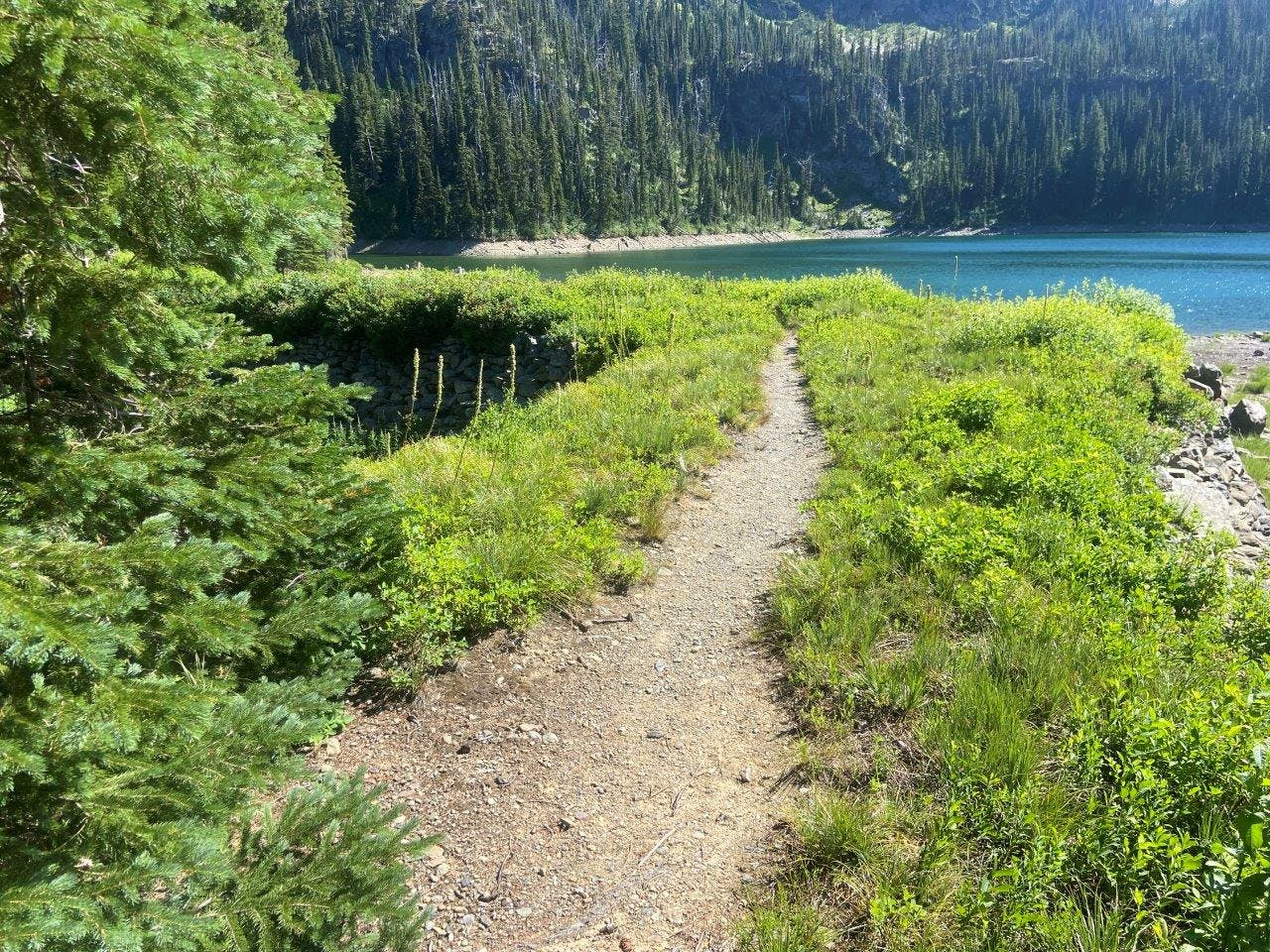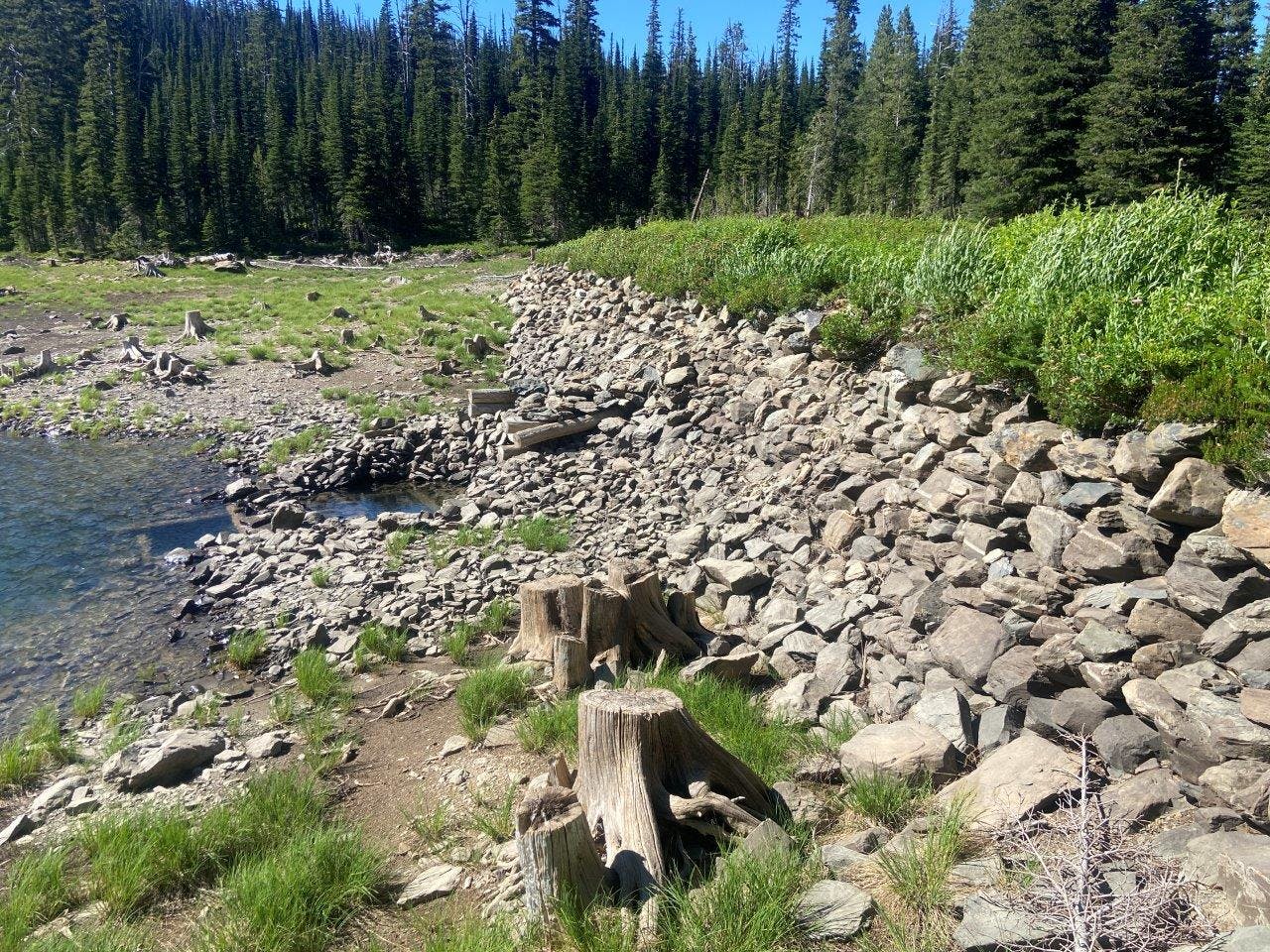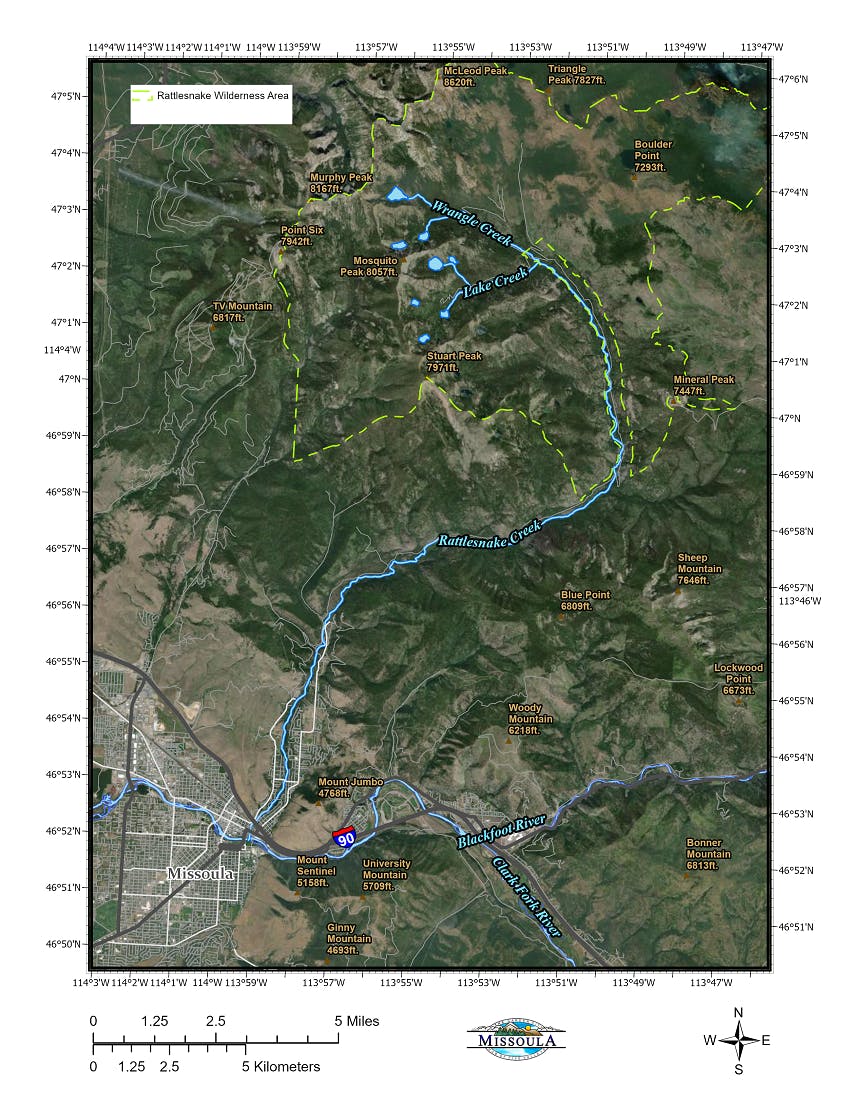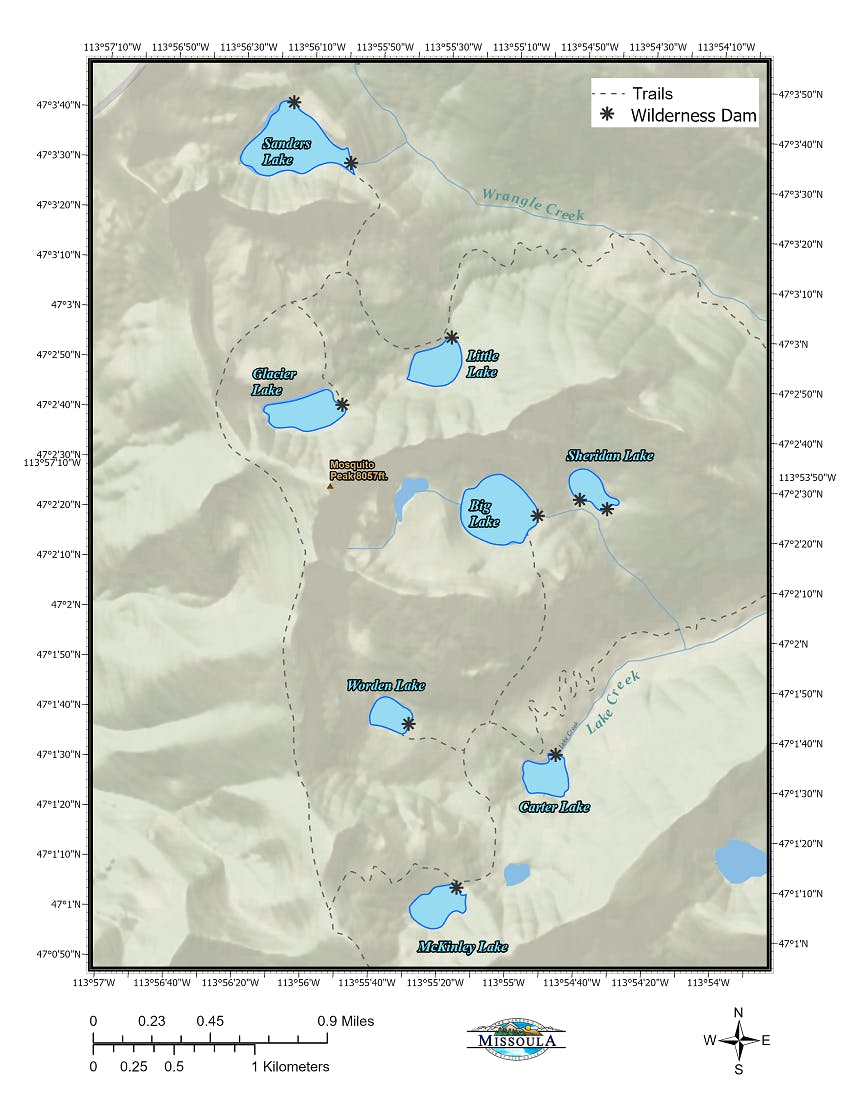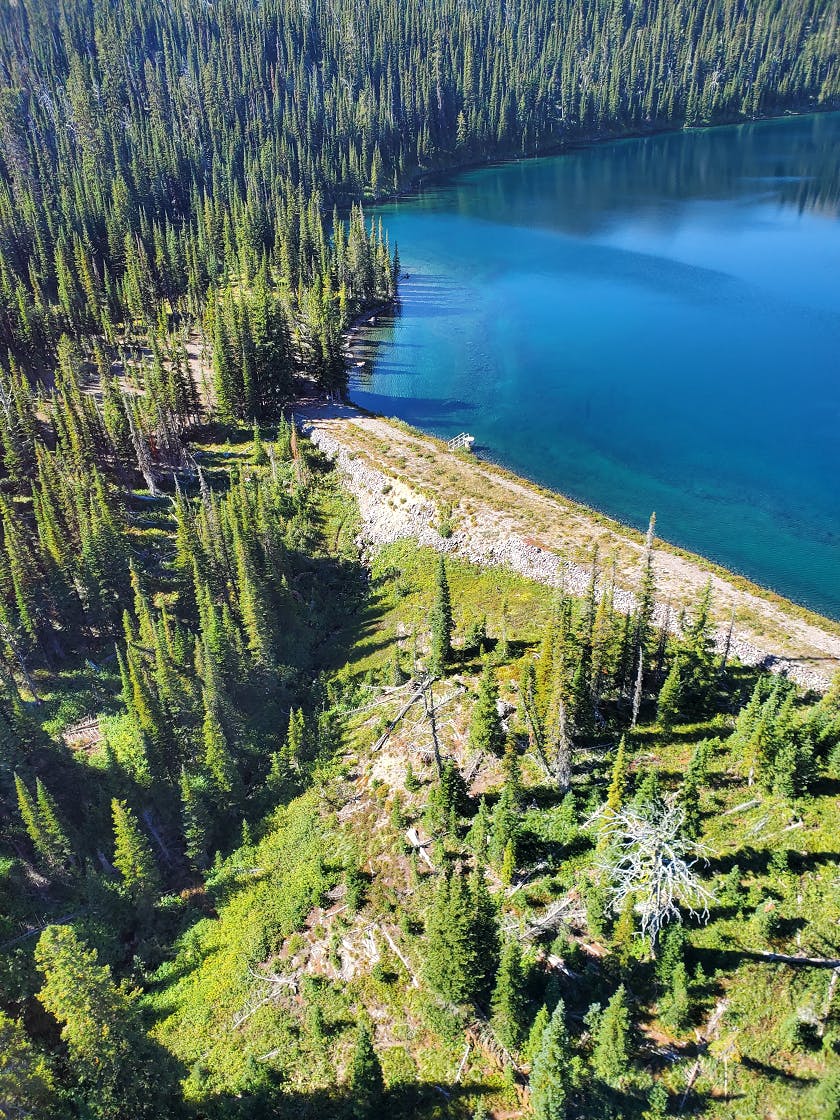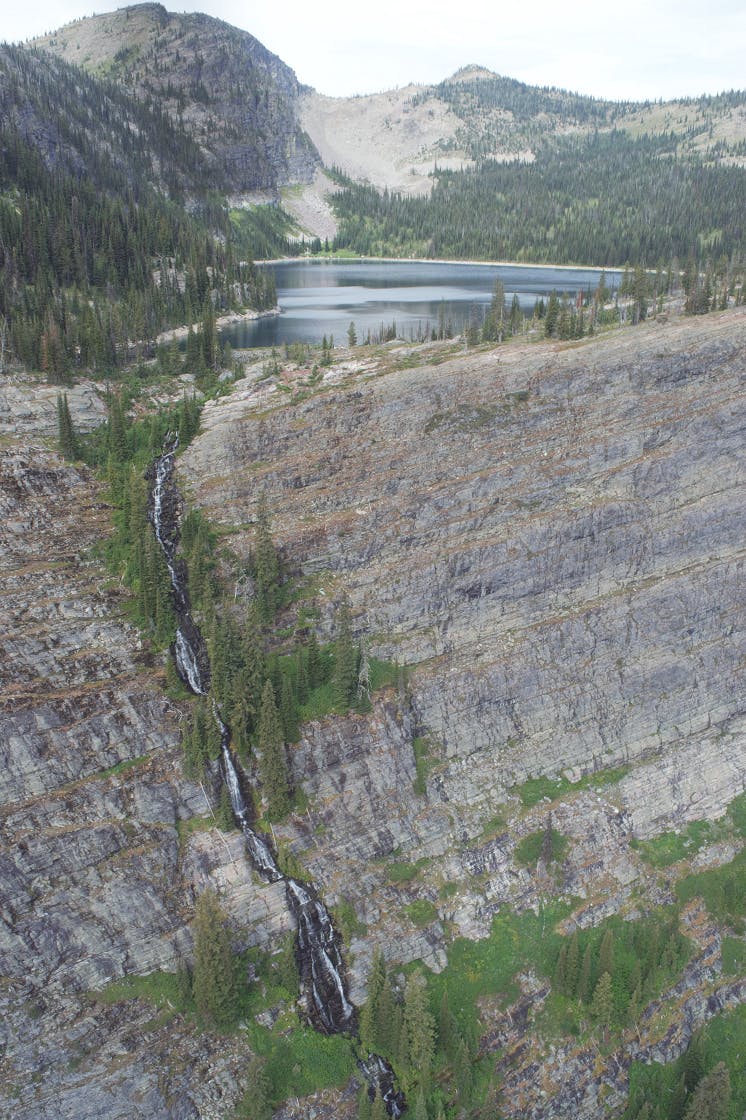Rattlesnake Wilderness Dams
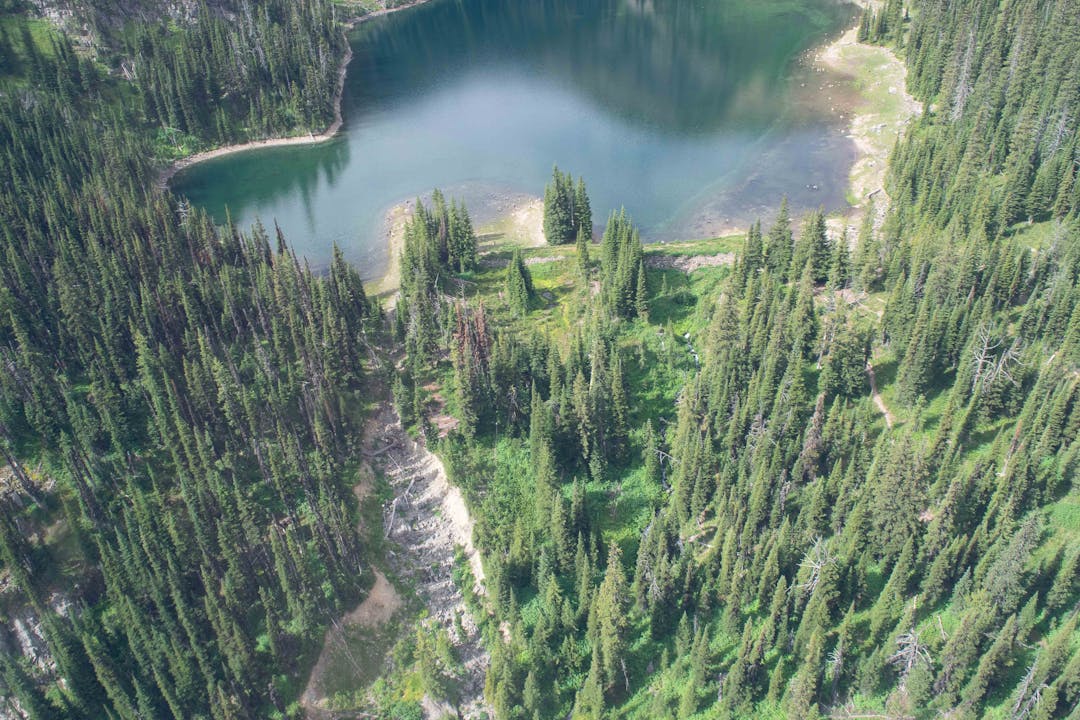
McKinley Lake Dam Decommissioning Project
The project to decommission the McKinley Lake dam, in the Rattlesnake Wilderness and National Recreation Area, was chosen as the pilot project to begin addressing concerns presented in the 2018 Rattlesnake Dams Feasibility Study, which included ongoing erosion issues at this dam's spillway.
After an involved public outreach and planning process, the City of Missoula, in conjunction with project partners Trout Unlimited and Montana Fish, Wildlife & Parks and in collaboration with the U.S. Forest Service, is ready to move forward with the decommissioning process for the McKinley Lake dam. Work would involve removing the dam spillway, embankment, and adjacent apron for about 70 feet along the top of the dam. Crews would remove all piping, outlet valves, and other control structures. The rock and dirt that will be removed from the earthen embankment will be used as fill material along the lake edges. Gravel, cobble, and boulders from the dam will be used for the stream reconstruction portions of the project.
 Blasting to remove dam. Photo credit: Jason Jaaks
Blasting to remove dam. Photo credit: Jason Jaaks
 Blasting to remove dam. Photo credit: Jason Jaaks
Blasting to remove dam. Photo credit: Jason JaaksUPDATE: October 2024
Missoula Water and its project partners completed a pilot project to decommission the dam on McKinley Lake in the Rattlesnake Wilderness Area throughout summer 2024. The years-long process included direction and approvals from the U.S. Forest Service, assistance from Montana Fish, Wildlife & Parks, Trout Unlimited, and the Montana Conservation Corps and funding from Missoula Water and various grants.
The dam was removed as the first major project to address recommendations from the 2018 Rattlesnake Dams Feasibility Study, which identified repair needs at City-owned wilderness lakes as well as the on-going maintenance of these remote sites and their dam infrastructure.
Removal of the dam on McKinley Lake was done in accordance with strict guidelines from the U.S. Forest Service due to various restrictions for equipment and tool use in a wilderness area. How the required equipment and materials were transported to the site (mule train), and how the area would look once work was done were also part of the decommissioning plan and process.
City utility engineer-in-training Triston Firth spent multiple days camped at the site and said of the project, “Working in such a remote location brings its challenges. Constantly changing weather conditions and the duration of project were demanding. But, despite these drawbacks, we now know there’s a way for us to complete future wilderness dam projects.”
 Finished project site. Overflow from the lake will now be able to run down the hill in the channel where it ran before the dam was built.
Finished project site. Overflow from the lake will now be able to run down the hill in the channel where it ran before the dam was built.The City of Missoula took over ownership of ten lakes and dams in the Rattlesnake Wilderness Area as part of its purchase of Mountain Water in 2017. That resulted in the utility needing to maintain the sites and all dam structures. City staff make trips up to these remote sites each summer; engineers inspect the dams, and Missoula Parks & Recreation staff help clear spillways and maintain vegetation. This is a costly endeavor, so for the past few years, the water utility has been looking into removing or rehabilitating the dams since they have not been used for municipal water supply for several decades. The McKinley Lake dam removal was a pilot project to test the difficulty involved with dam removal and to analyze the results following the removal.
See more photos and videos on the right side of this page.
What's Next? City staff will continue to work with our project partners to determine future dam removal or rehabilitation work. Future projects are also dependent on funding availability.
UPDATE: April 2024
U.S. Forest Service has released its "Decision Notice for the Terms and Conditions for McKinley Lake Dam Decommissioning and Restoration Project" document.
Public Comment (Closed)
The Montana Department of Natural Resources and Conservation (DNRC) has released its Decision Notice, Adoption of Existing Environment Review report regarding this project. Anyone wishing to comment on this document can do so by emailing Samantha Treu at Samantha.Treu@mt.gov. Comments will be accepted until May 22, 2023.
Informational Presentation
An informational public presentation about the next steps in the process to decommission the McKinley Lake dam was held on Wednesday, March 15, 2023, at 6 p.m. in the Missoula City Council chambers.
To receive project updates, subscribe using the link on the upper right side of this page.
Exploring Solutions
The City has many options as it considers the future of the ten wilderness lake dams it owns in the Rattlesnake Wilderness and National Recreation Area.
Missoula Water is responsible for repairing and maintaining the dams following the the City's purchase of the water utility in 2017. The 2018 Rattlesnake Dams Feasibility Study concluded that Missoula Water should start planning to either decommission or rehabilitate each dam because the City does not have the staff or financial resources to make necessary repairs and maintain all ten dams. So, decisions need to be made about how to handle these problems now and into the future. The study suggests that most of the dams should be decommissioned with the City repairing and continuing to maintain the largest dams with the largest storage water rights.
However, there are many options for the City to consider, including decommissioning some or all dams, reconstructing some dams in order to store water that would add to Rattlesnake Creek stream flows, or improving the dams to meet U.S. Forest Service standards. The City must also think about long-term community needs, regulatory agency requirements, environmental impact and climate change, public safety, repair costs, maintenance costs, and water rights.
Public Outreach
On April 7, 2021, City staff from the Public Works & Mobility and Parks & Recreation departments, Trout Unlimited, U.S. Forest Service, and Montana Fish, Wildlife & Parks held an informational public forum presentation webinar to provide a brief history of the wilderness lakes and dams; an explanation of the City's maintenance challenges; project vision and goals; a brief description of fish, wildlife, reptile/amphibian, and vegetation data; and a project timeline. For details, please watch the video presentation or review the slideshow presentation.
At that time we also conducted a survey to solicit preliminary public feedback on the project. This survey is closed, but the results are available to review.
Background on Rattlesnake Wilderness Area Lakes & Dams
In 2017, the City of Missoula acquired the lower Rattlesnake dam and surrounding property and buildings, ten dams in the Rattlesnake Wilderness Area, and related water rights as part of its purchase of the former Mountain Water Company. Rattlesnake Creek was the original water supply for the early settlers in Missoula, providing water for lumber mills and homesteaders. Because the flow on Rattlesnake Creek is variable in the summer, ten dams were constructed on eight high mountain lakes between 1911 and 1923 in order to add to the water supply. Most of the dams are located on former glacial cirque lakes at elevations between 6,000 and 7,000 feet. They were built from logs, earth, and rock with basic metal headgates, which are opened and closed manually to release or store water.
In 1980, much of the land in the headwaters of Rattlesnake Creek was designated as the Rattlesnake Wilderness and National Recreation Area. Shortly thereafter, the water company discontinued using Rattlesnake Creek as a daily water supply source after Giardia was discovered in 1983 and began using only groundwater wells as its water source. As a result, the dams have not been used for water delivery in more than 30 years. They suffer from a maintenance backlog, and for the most part, are not fully functional.
Following the successful removal of the lower Rattlesnake dam in 2020, the City continues to collaborate with Montana Fish, Wildlife, and Parks; Trout Unlimited; the U.S Forest Service; and other partners to develop a strategy for improving conditions at the wilderness dams, preserving valuable water rights when economically feasible, and addressing site restoration, fisheries, public recreation, and public safety and liability concerns.
 Map of Lakes in the Rattlesnake Wilderness and National Recreation Area
Map of Lakes in the Rattlesnake Wilderness and National Recreation Area





